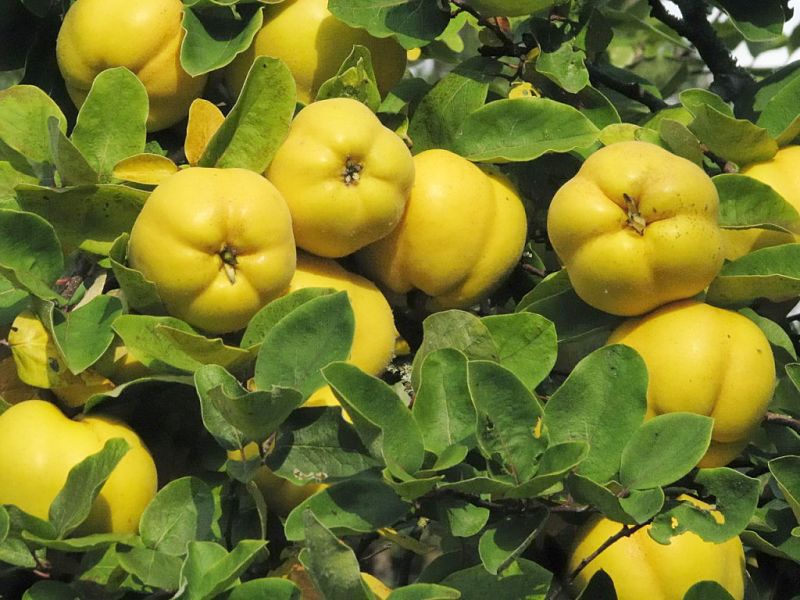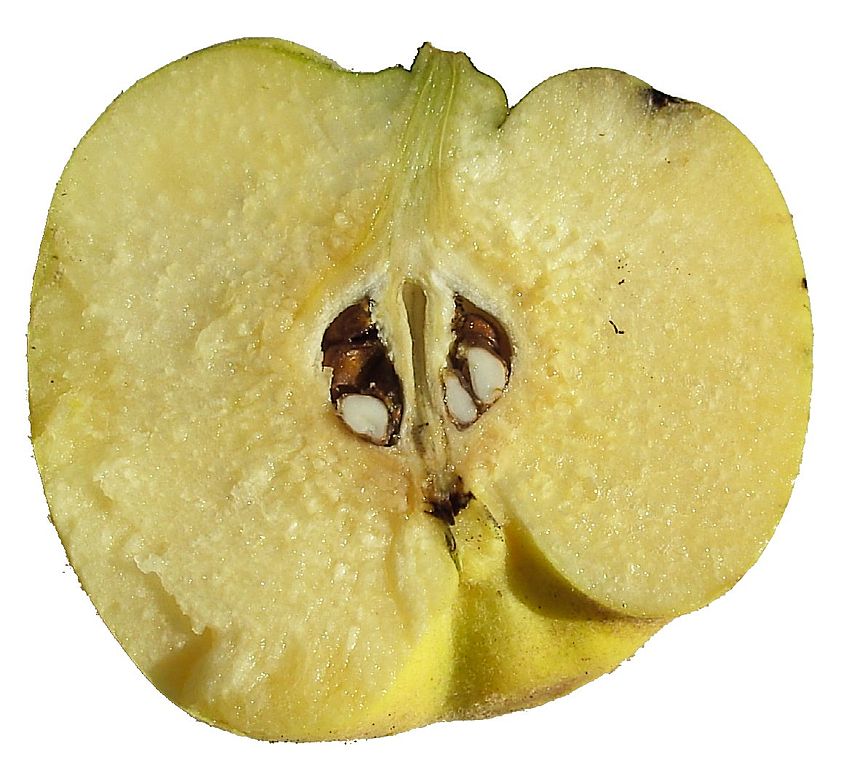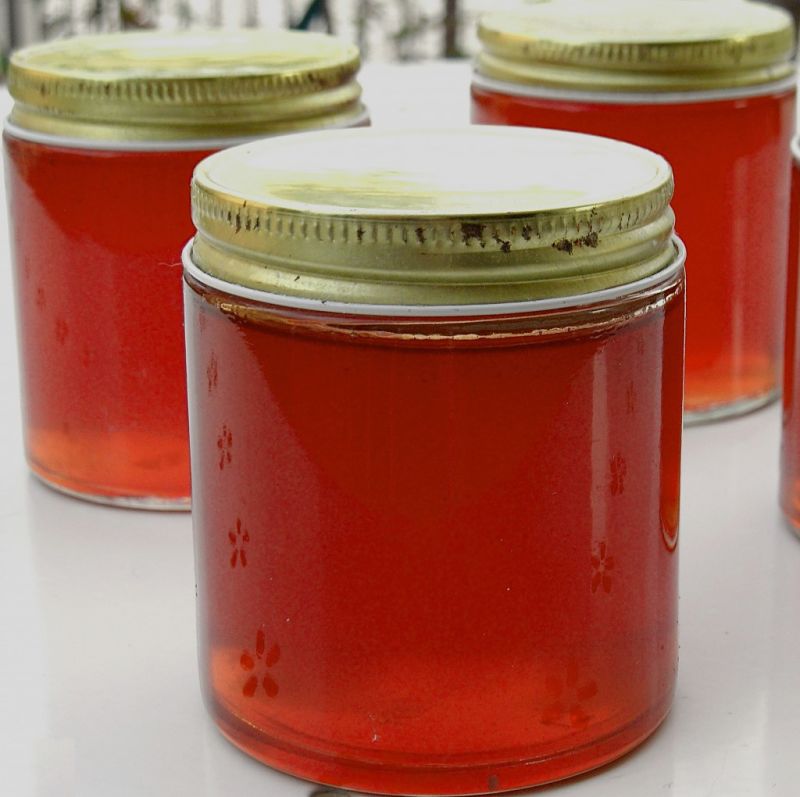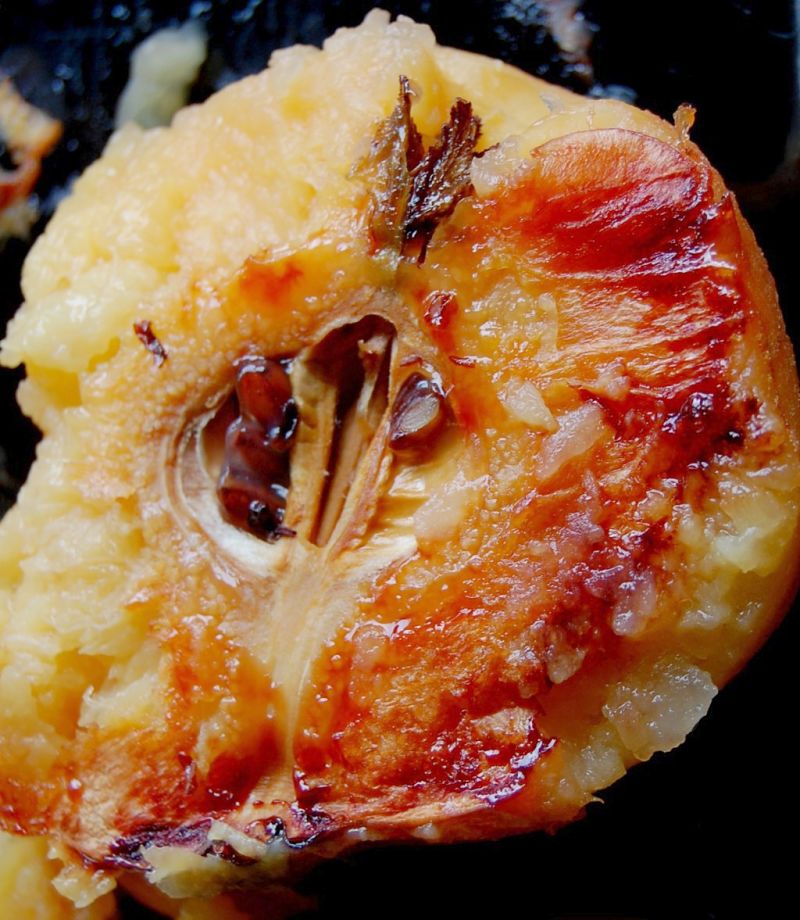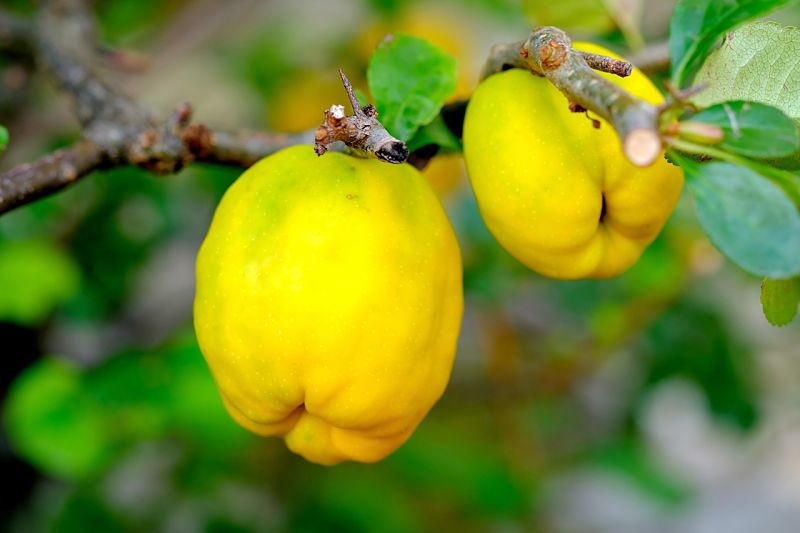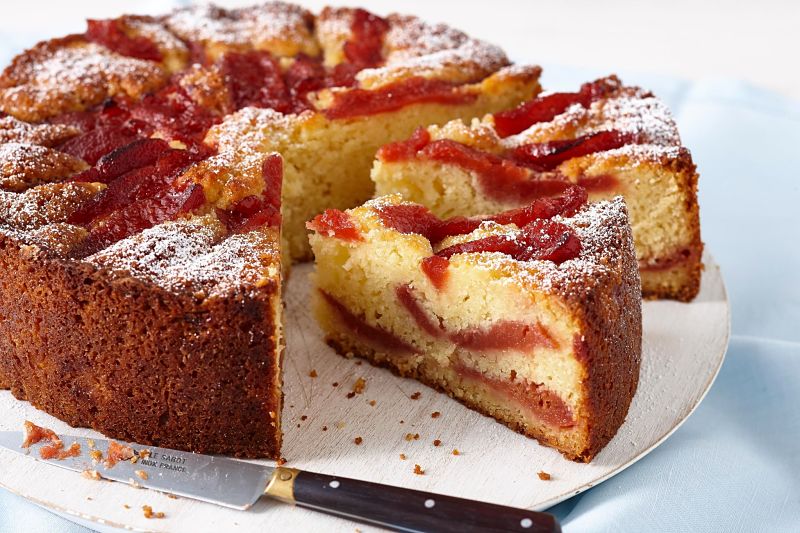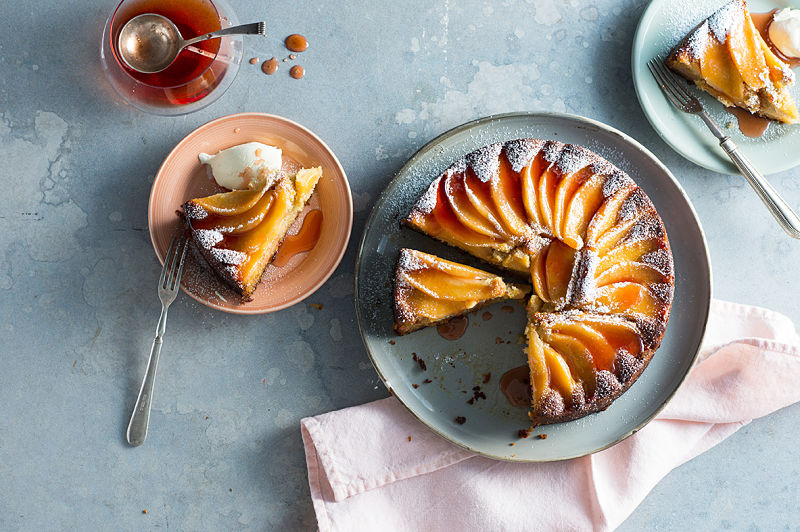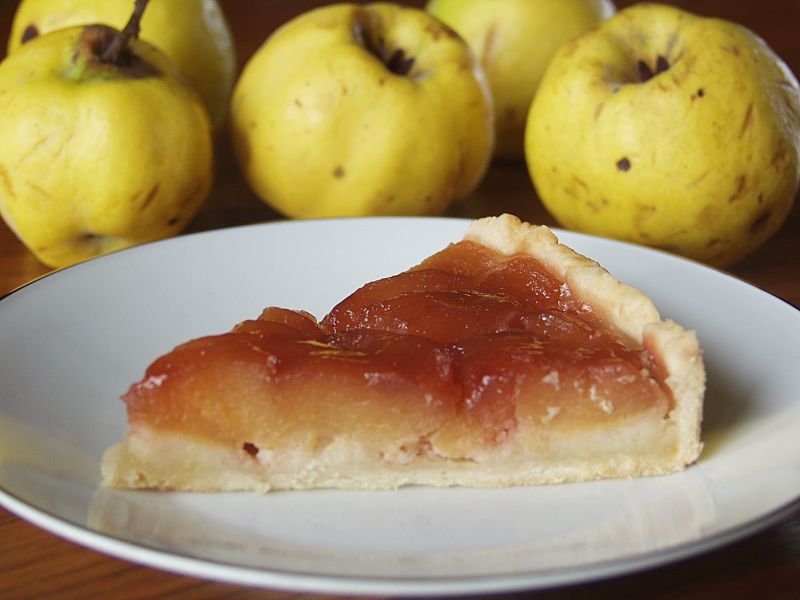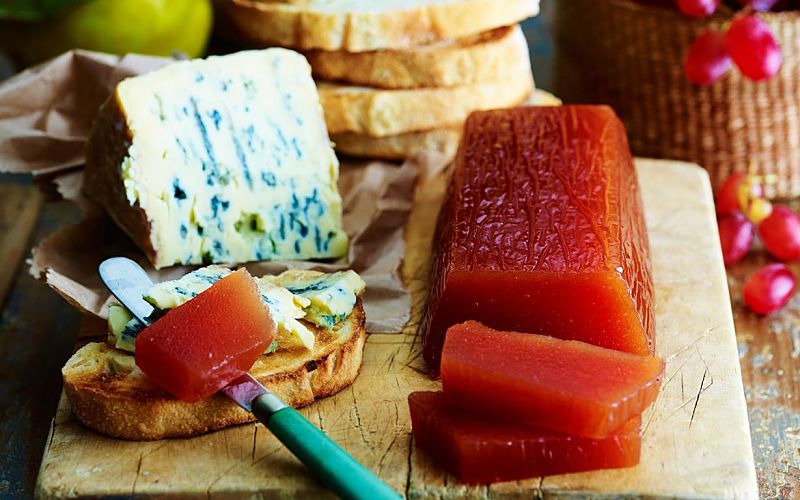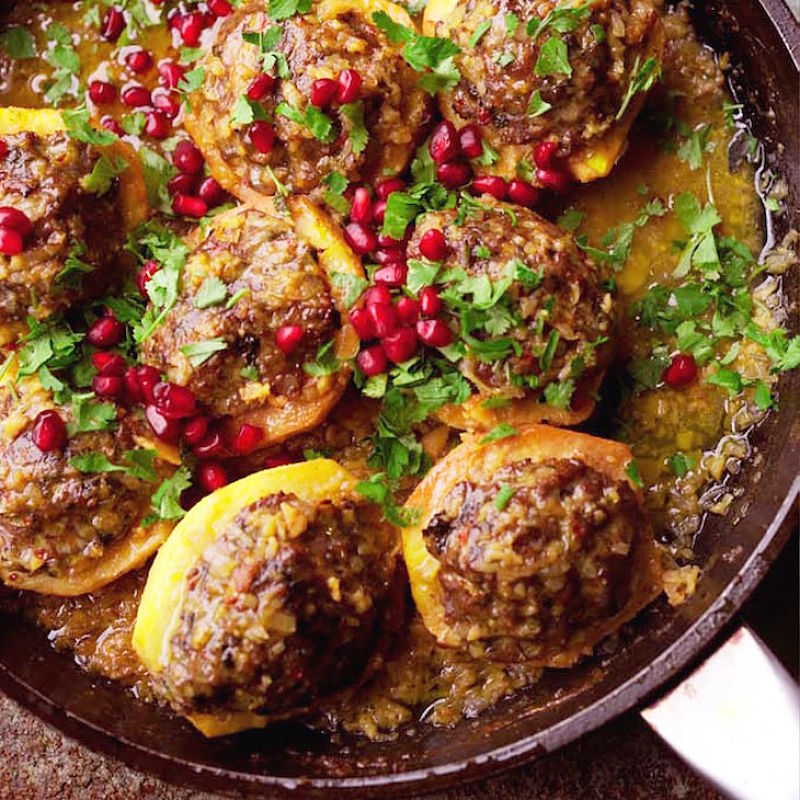Growing Quince Trees, Health Benefits and Best Quince Recipes
Quince fruit is not very attractive, and quinces have lost their popularity with many people. Some people may never of heard of them.
However, quince trees will reward you with delightful colors, aroma and taste exemplified by the classic quince jelly the belies its ugly looking and bitter tasting raw fruit. Quinces are never eaten raw and are always cooked. So you can ignore the appearance, grittiness and taste of the raw fruit.
The good news is that quinces are relatively easy to grow, especially now that plants grafted onto tough root stocks overcome many of the problems for growing quinces in home gardens.
There is a delightful array of delicate flavors you add to quinces when they are cooked such as fresh ginger, spices, flavor intense honeys, rosemary and other fresh herbs. Quinces are idea in jelly, jam. desserts and many savory dishes as well.
The quince is related to apples and pears and share many of the family's health benefits, particularly fiber, minerals and vitamins.
This article describes how to grow quinces, their many uses, health benefits and includes some of the best ever quince recipes for you to try. Give quinces a go. You will love them all over again.
Quince Fruit
Quinces are medium sized semi-tropical deciduous trees, growing to about 10-15 feet high (4-5 m). Prolific white and pink white flowers appear in spring and early summer, developing into large yellow color fruits in the summer months. The flesh inside a ripe quince is light yellow in color, somewhat gritty, and there is a central seed core similar to apples. Raw quince has an intense and distinctive aroma, but don't be fooled as the raw flesh of very ripe fruit is tart, gritty and astringent. Best to cook the quinces after peeling them and removing the seeds. When cooked the quince flesh magically turns to a pink color and the grittiness disappears.
Growing Quince Trees
Quince trees require a warm climate with hot summers. Keep plants well watered in spring and during hot dry periods in the summer months. Quinces flower early in spring and so take care to protect the flowers from late frosts. Quinces will grow in most soils and do well when grown as freestanding trees in sunny positions. They can also be trained to grow as fan against a wall that receives plenty of sunshine. They can also be grown in large pots and tubs.
Spread a thick layer or organic mulch over the root zone of the plant, and fertilize the trees regularly with organic manures and fruit fertilizer mixtures, especially early in spring to encourage growth and flowering. Prune annually to remove dead or diseased branches and to thin out the core of the canopy.
These days you can buy grafted quinces,which are well worth the extra expense. Free-standing trees should be planted in full sun with plenty of space around them. Avoid water-logging the plants in winter and keep the soil moist during hot dry periods in summer. Fruit are ready to harvest in late summer when the fruits turn yellow, and start to smell like they are ripe.
There is a wide variety of detailed information about growing quinces, disease control and the best grafting options for quinces.
Health Benefits of Quince Fruit
The table below compares the nutrients in 100 g of Quince fruit with a similar amount of apples, pears and blueberries. The significant differences for Quinces, for both high and low value are highlighted in bold in the table. The key points are:
- Quince is generally a low calorie fruit with 100 g fresh raw fruit providing just 57 calories, which is similar to the other fruits, except for apples which have lower calories. This may be offset by the extra sugar and sweetener required to overcome the tart taste of quinces. In some dishes this tart taste is an asset.
- Quince is a good source of fiber, but the amount is less than for the other fruits in the table, which are all high. The tannin gritty granules in the pulp may have antioxidant properties.
- Ripe quince fruit contains 15 mg of Vitamin C per 100 g, providing 25% of the recommended daily allowance. This is more than the other fruits, which are nevertheless all good sources of vitamins. Quinces are also a good source of the B-group vitamins such as riboflavin, niacin, thiamin, pyridoxine.
- Quinces are an excellent source of minerals, particularly, iron, copper, potassium, and magnesium, compared with the other fruits.
Culinary Uses for Quince Fruit
Quince flesh is not eaten raw as it is very sour, gritty and astringent due to the tannin it contains. Cooking destroys these compounds and removes the bitterness and harsh taste, helped by the addition of a little sugar or honey, or by the ingredients in the dish to which it is added.
Preparation of quince is easy, and similar to preparing apples for cooking. Wash the fruit in cold water, peel, cut into quarters and remove the core and seeds. Quinces are an excellent fruit for jams, jellies, marmalades and other preserves. Surprisingly, quinces are also wonderful in many savory dishes, desserts and baked dished. Fruit pulp can be added to curries and to sauces for seafood, chicken pork and beef. Some of the main ways to cook quinces are.
- Simple Stewed or Poached Quince - Take about 2 lb (1 kg) of quince, cut in half, peel and remove the seeds. Then, slice the quince into segments or quarters. Set the slices aside in a bowl of water. Mix 4 cups of water with the sugar or honey in a saucepan. Add various flavorings such as cloves, vanilla star aniseed or various slices. Bring to the boil while stirring to dissolve the sugar. Then, add the quince and simmer for 30-45 minutes until the quince is pink and just tender.
- Jellied Quince - The pectin in quince makes it ideal for making quince jelly, jams and marmalades.
- Roasted Quince - Sliced halved quinces can be simply roasted in the oven and served as a dessert, or a side dish with roast meat and other dishes.
- Quince Served with Meat - The flavor of quince pairs well with many meat dishes including braised beef, pork, lamb, chicken and duck. Quince can be added to slow-cooked dishes, curries and stews. Quinces can also be used to replace apples in many meat dishes, especially pork that include fruit, and to make sauces and marinades for meat.
- Quince Used in Desserts and Baked Items - Quinces can replace apples and pears in many desserts and baked items such as cakes, pies and flans.
Best Quince Recipes - A Variety of Uses and Dishes
Simple Creamy Poached Quince Pie
Ingredients
- 1 pinch salt
- 1 1/2 cups water
- 1/2 teaspoon salt
- 3/4 cup white sugar
- 2 tablespoons butter
- 1/2 cup honey (or sugar)
- 1/2 teaspoon ground cinnamon
- 3 tablespoons general purpose flour
- 1 packet of pie pastry mix or homemade
- 3 pounds (1.5 kg) ripe quince - peeled, cored and sliced into quarters or segments
Method
To prepare the quince pie filling place the quinces in a saucepan with the water, honey and a pinch of salt. Bring to the boil, and then reduce to a simmer and cover the pan. Simmer gently until the quince is just starting to get tender (about 8-10 minutes). Do not overcook as the slices with fall apart. Sieve the quince slices and set aside to cool, retaining the juice for use in the filling.
Roll out the pastry divided into two halves for the pie top and base. Line a 9 inch (20 cm) pie plate with one half of the rolled pastry.
Prepare the creamy filling by mixing the white sugar, flour, cinnamon and 1/2 teaspoon salt in a small bowl and mix well. Add the quince cooking liquid. Transfer the liquid to a saucepan, add the butter and bring it to a boil. Reduce the heat to a simmer and cook the mixture while stirring constantly until the mixture thickens (about 1-3 minutes). Remove the saucepan from the stove and set aside to cool.
To assemble the pie, transfer the cooled quince into the pie pastry in a greased pan and cover with the sauce. Add the top crust for the pastry pie, crimping around the edges to seal. Bake in a preheated oven at 425 degrees F (220 degrees C) for about 25 minutes, until the edges of the crust and top are golden brown and the filling is bubbling. Serve warm.
Traditional Simple Quince Jelly Recipe
Ingredients
- 7 1/2 cups sugar
- 4 1/2 cups water
- 1/4 cup lemon juice
- 3 fluid ounces ( 100 ml) liquid pectin
- 3 pounds quinces, cored and finely chopped (peeled optional)
Method
Sterilize about 8 clean glass jars and lids by boiling in water for 5-10 minutes. Place the chopped quinces into a large pot with 7 1/2 cups of hot water. Bring the liquid to the boil, and then reduce the heat and simmer the quinces covered for about 15-20 minutes. Remove 4 cups of the juice and strain. Add the liquid to the lemon juice and sugar to a heavy pot, and heat to boiling point. Keep boiling slowly while adding the pectin. Boil for 60-90 seconds stirring constantly. Remove the pan from the stove and skim off any foam that has formed. Ladle the liquid into the hot sterile jars that have been boiled. Seal the jars with sterile lids. Set aside to set. Refrigerate the quince jelly after opening.
Sliced Braised Lamb with Quince, Rosemary and Mixed Spices
Ingredients
- Sea salt
- 1 large quince or two small ones
- Juice of 1 lemon
- Zest of 1 orange
- 1 teaspoon cumin seeds
- 1 sprig fresh rosemary
- 1 teaspoon coriander seeds
- 1/2 teaspoons chilli flakes
- Freshly ground black pepper
- 2 tablespoons good quality honey
- 3 tablespoons olive oil, extra-virgin preferred
- 500 g ( 1 lb) butterflied lamb leg steak, with excess fat removed
Method
Toast the coriander and cumin seeds in a dry pan for about one minute. Combine the oil with the seeds, orange zest and chilli flakes in a large bowl. Add the lamb, rubbing the mixture well into all the surfaces of the lamb piece. Cover and set aside in the refrigerator for 2-4 hours to marinade the lamb.
Slice the quince in half, lengthways, remove the core and seed and then cut each half into four segments. Place the quince segments into a small saucepan with the lemon juice, rosemary, honey. Add enough water just cover the quince slices in the pan. Bring to the boil and simmer gently, covered for about 30-45 minutes until the quince slices are tender and pink. Sieve the quince slices and add to the bowl with the lamb, mixing to combine well.
Heat a griddle pan, frying pan using a high heat setting. Fry the lamb steak piece for several minutes on each side. Test for doneness and then add the quince segments, stirring until they start to caramelise. Remove the lamb and cut into thin slices and add the cooked quince segments. Deglaze the pan with the poaching liquid, stir and then pour the pan juices over the meat and quince. Serve immediately sprinkled with sea salt, freshly ground pepper and garnished with rosemary, parsley or other fresh herbs.
Moist Quince and Ginger Cake or Pudding
Ingredients
- 2 large quinces
- 1/2 teaspoon of salt
- 150 g (5 oz) butter
- 1 small lemon, juiced
- 250 g (9 oz)plain flour
- 3 eggs, plus 1 egg yolk
- 1 teaspoons baking powder
- 2 teaspoons ground ginger
- 160 g (6 oz) runny honey
- 1 teaspoons vanilla extract
- 100 g (3 1/2 oz) creme fraiche
- 180 g (7 oz) caster or vanilla sugar
- 160 g (6 oz) caster or vanilla sugar
- 1 small thumb fresh ginger, peeled and finely diced
- 1 large piece of fresh ginger, peeled and finely chopped
Method
Preheat the oven to 325 degrees F (170 degrees C). Grease a spring-form cake tin and line the sides and based with baking paper, buttering the inside of the parchment. Peel the quinces, remove the cores and cut into thin slices. Place the quince slices into a large saucepan with 1 1/2 cups of water, and add the lemon juice, honey and sugar. Bring to a boil while stirring to dissolve the sugar. Then, reduce the heat and simmer covered, stirring occasionally, for 45-60 minutes until until the quince is tender. Drain into a colander or sieve, retaining the liquor. Set the quince aside to cool. Reheat the liquid to a thick syrup. Next, prepare the cake mixture by sifting the flour, salt, baking powder and ground ginger into a bowl. In a separate bowl, whisk or beat the sugar into the butter until it is pale and fluffy. Gradually add the eggs and extra yolk one at a time, beating or whisking well after each egg is added. Add the creme fraiche, vanilla and several tablespoons of the flour and mix through. Then, gently fold through the remainder of the flour. Then, stir through the chopped ginger and cooled poached quinces. Transfer the mixture to the greased and lined baking tin. Bake the cake for about 60 minutes. Check for doneness and if the cake is starting to brown, but is not cooked in the center, cover with a piece of foil and cook for a further 15-20 minutes. Remove the cake from the tin and leave on a wire rack to cool completely. Pour over a hot syrup to serve as a pudding, or serve dry as a delicious and unusual cake.
Quinces Roasted with Port Recipe
Ingredients
- 18 cloves
- 2 star anise
- 3 cinnamon sticks
- Juice of one small lemon
- 5 tablespoons good quality honey
- 1 cup of port (or similar sweet red wine)
- 3 quinces, halved, cored and peeled (optional)
Method
Heat the oven to 350 degrees F (180 degrees C). Insert 3 cloves into the skin of each of the quince halves. Place the quince halves with the skin side up in a lightly greased roasting tin. Whisk 1 1/2 cups of water, port, lemon juice and honey, and pour over the quinces in the pan. Add the cinnamon sticks and star anise to the pan. Bake the quinces for 50-70 minutes until the quince is tender, sticky, caramelised and golden. Remove the cloves from the skin. Flip the halves over and bake for an extra 15 minutes. Remove the quinces and pour the liquid into a saucepan to thicken if needed. Serve the roasted quinces warm, pouring over the syrup and adding ice cream or whipped cream.
Spicy Apple, Date and Quince Chutney
Ingredients
- 1 tablespoon salt
- 1 teaspoon mixed spice
- 1 tablespoon ground cumin
- 1 teaspoon cayenne pepper
- 1 tablespoon ground ginger
- 250 g (9 oz) soft dates, chopped
- 900 ml (1 1/2 pints) white wine vinegar
- 2 red peppers, deseeded and finely diced
- 900 g (2 lb) apples, cored and roughly chopped
- 900 g (2 lb) light muscovado sugar or caster sugar
- Large piece fresh root ginger, peeled and finely chopped
- 900 g (2 lb) quince peeled and cored and roughly chopped
Method
Add the chopped apples and quinces to a large saucepan. Pour in about half of the vinegar, mix and bring the liquid to the boil. Reduce the temperature and simmer gently for 10-15 minutes until both fruits are just starting to soften. Add the rest of the vinegar, spices and other ingredients. Simmer the mixture gently, with the lid removed for about 30 minutes. Keep simmering until the liquid has reduced and has thickened. Stir and pour the chutney into sterilized jars, sealing while hot with sterilized lids. Refrigerate after opening each jar.
Comparisons of the Nutrients in Quince Fruit with Apples, Pears and Blueberries ( 100 g servings)
|
Nutrient (100 g serving)
|
Quince (100 g)
|
Pears (100 g)
|
Apple (100 g)
|
Blueberries (100 g)
|
|---|---|---|---|---|
|
Energy
|
57 Kcal
|
58 Kcal
|
50 Kcal
|
57 Kcal
|
|
Carbohydrates
|
13.81 g
|
13.81 g
|
13.81 g
|
14.49 g
|
|
Protein
|
0.40 g
|
0.38 g
|
0.26 g
|
0.74 g
|
|
Total Fat
|
0.10 g
|
0.12 g
|
0.17 g
|
0.33 g
|
|
Cholesterol
|
0 mg
|
0 mg
|
0 mg
|
0 mg
|
|
Dietary Fiber
|
1.9 g
|
3.10 g
|
2.40 g
|
2.4 g
|
|
Vitamins
|
|
|
|
|
|
Folates
|
3 µg
|
7 µg
|
3 µg
|
6 µg
|
|
Niacin
|
0.200 mg
|
0.157 mg
|
0.091 mg
|
0.418 mg
|
|
Pantothenic acid
|
0.081 mg
|
0.048 mg
|
0.061 mg
|
0.124 mg
|
|
Pyridoxine
|
0.040 mg
|
0.028 mg
|
0.041 mg
|
0.052 mg
|
|
Riboflavin
|
0.030 mg
|
0.025 mg
|
0.026 mg
|
0.041 mg
|
|
Thiamin
|
0.020 mg
|
0.012 mg
|
0.017 mg
|
|
|
Vitamin A
|
40 IU
|
23 IU
|
54 IU
|
54 IU
|
|
Vitamin C
|
15 mg
|
4.2 mg
|
4.6 mg
|
9.7 mg
|
|
Vitamin E
|
0.12 mg
|
0.12 mg
|
0.18 mg
|
0.57 mg
|
|
Vitamin K
|
4.5 µg
|
4.5 µg
|
2.2 µg
|
19.3 µg
|
|
Electrolytes
|
|
|
|
|
|
Sodium
|
1 mg
|
1 mg
|
1 mg
|
1 mg
|
|
Potassium
|
119 mg
|
119 mg
|
107 mg
|
77 mg
|
|
Minerals
|
|
|
|
|
|
Calcium
|
11 mg
|
9 mg
|
6 mg
|
6 mg
|
|
Copper
|
0.130 mg
|
0.082 mg
|
|
|
|
Iron
|
0.70 mg
|
0.17 mg
|
0.12 mg
|
0.28 mg
|
|
Magnesium
|
8 mg
|
7 mg
|
5 mg
|
6 mg
|
|
Phosphorus
|
11 mg
|
11 mg
|
|
|
|
Manganese
|
|
|
|
0.336 mg
|
|
Zinc
|
0.04 mg
|
0.10 mg
|
0.04 mg
|
0.16 mg
|
|
Phyto-nutrients
|
|
|
|
|
|
Carotene-ß
|
|
12 µg
|
27 µg
|
32 µg
|
|
Carotene-α
|
|
|
|
|
|
Cryptoxanthin-ß
|
|
2 µg
|
11 µg
|
|
|
Lutein-zeaxanthin
|
|
45 µg
|
29 µg
|
80 µg
|
